Biltema sold this ground fault interrupter (RCD / GFCI) device few years ago (does not seem to sell anymore). It is designed to be connected to 230V AC 50 Hz electrical outlet.
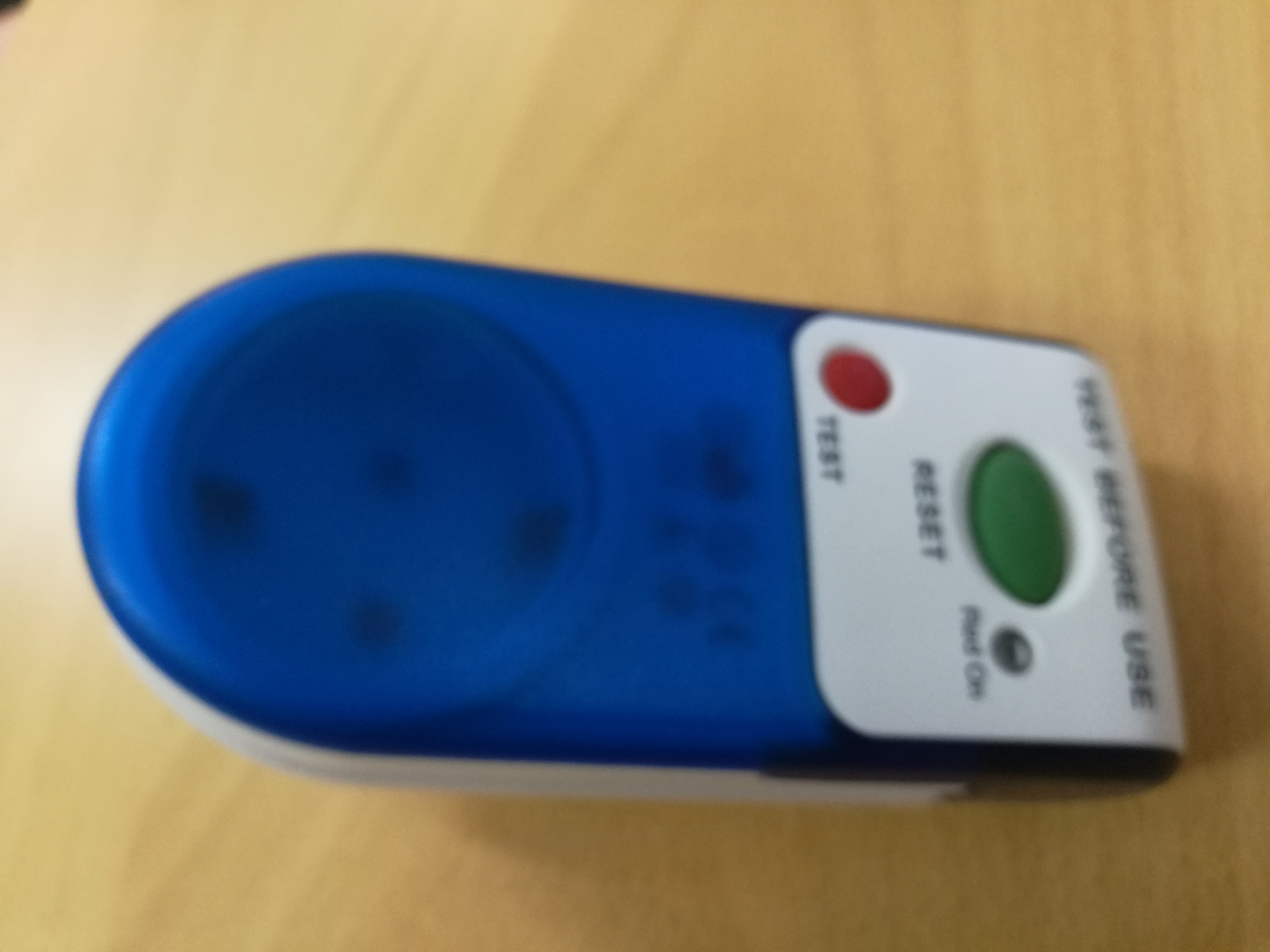
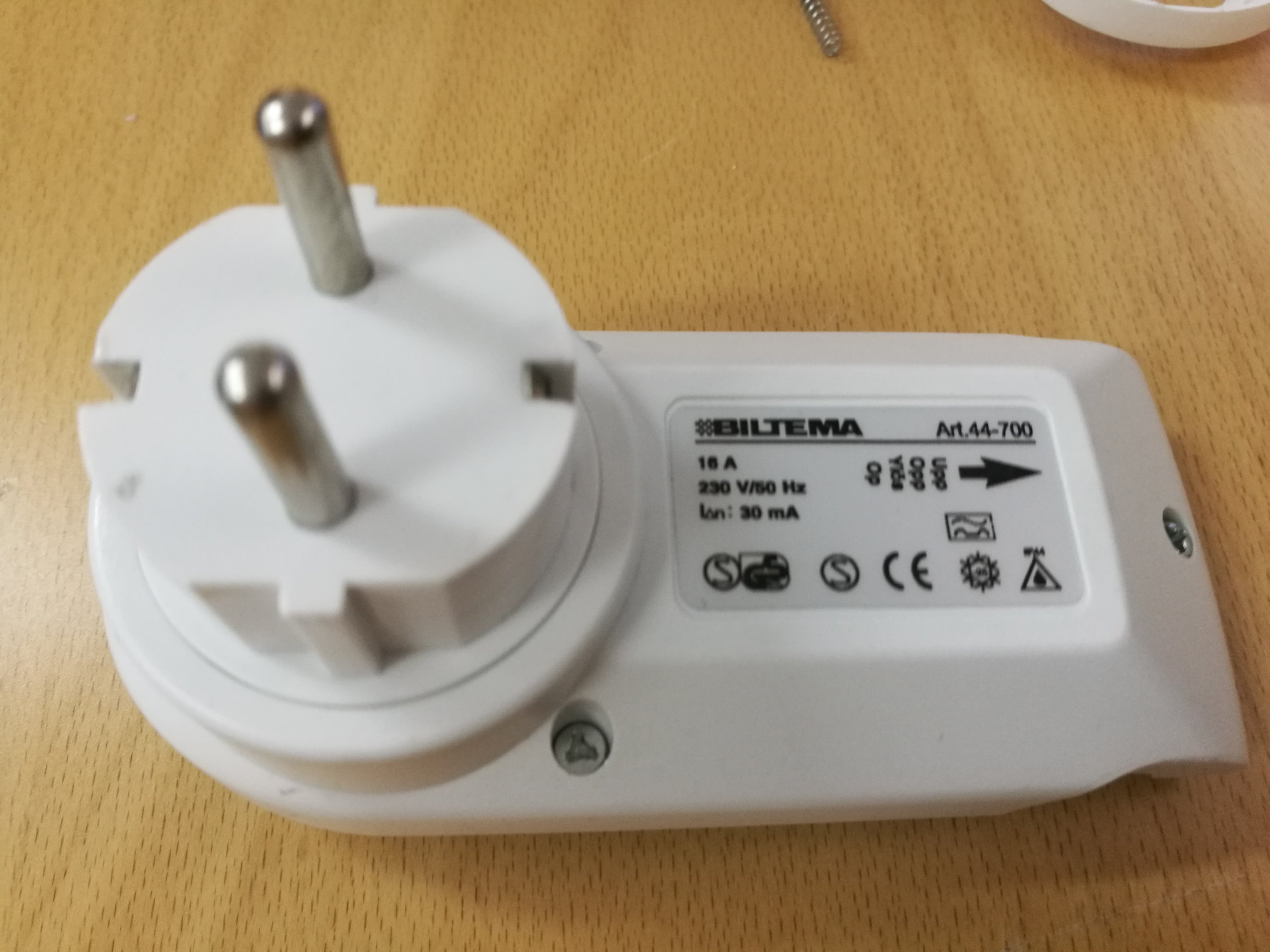
The information on the back of the device tells that this will trip at 30 mA leakage current. The symbol tells that this device will trip with AC leakage and pulsating DC leakage. The device is designed to be able to handle up to 16A current.
This device was designed to that you have to press the green “RESET” always when you want to turn it on after you have connected it to mains power. The device will always reset to tripped/OFF position if mains power is cut out. Maybe it was designed to work in this so that it would also protect the user against fault if the neutral wire (one of the most cumbersome bugs that other RCD types do not always protect).
Let’s look inside
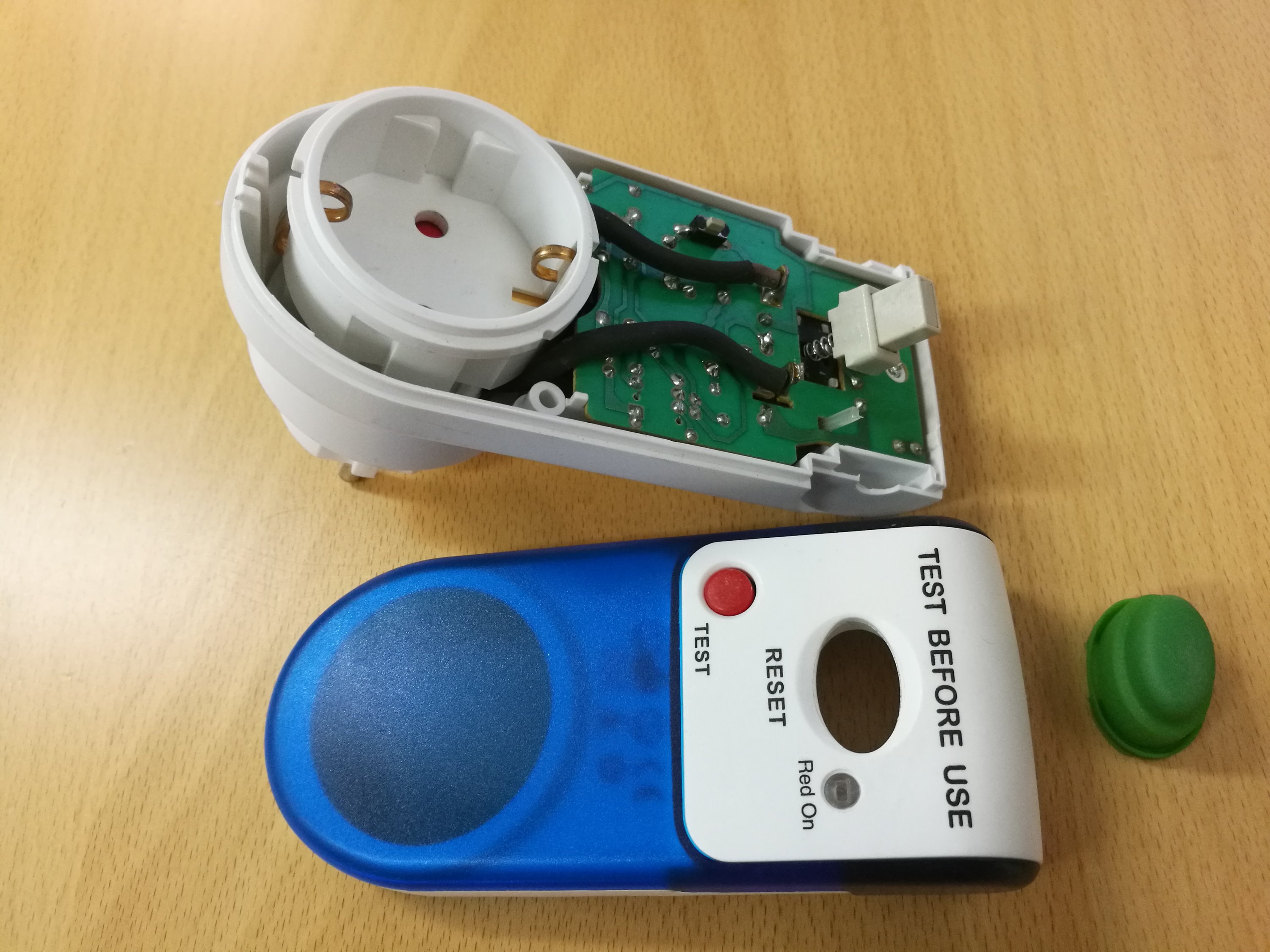
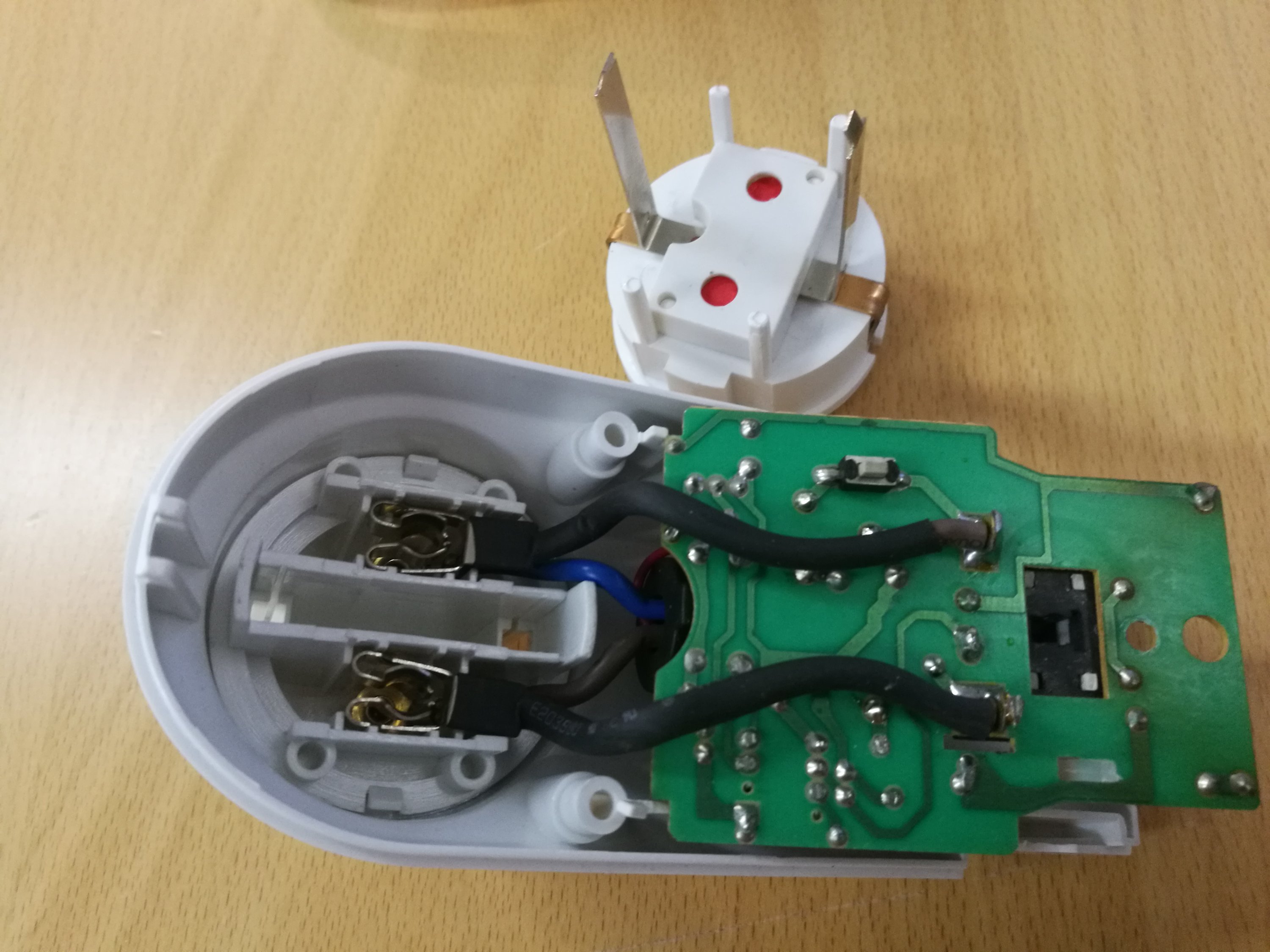
Quite normal here. Removing the button revealed some loose plastic parts dropping out. This tells why it did not work mechanically as it should. It seems that the main failure mode was a mechanical failure that prevented the device to be properly turned on so it was discarded as damaged device.
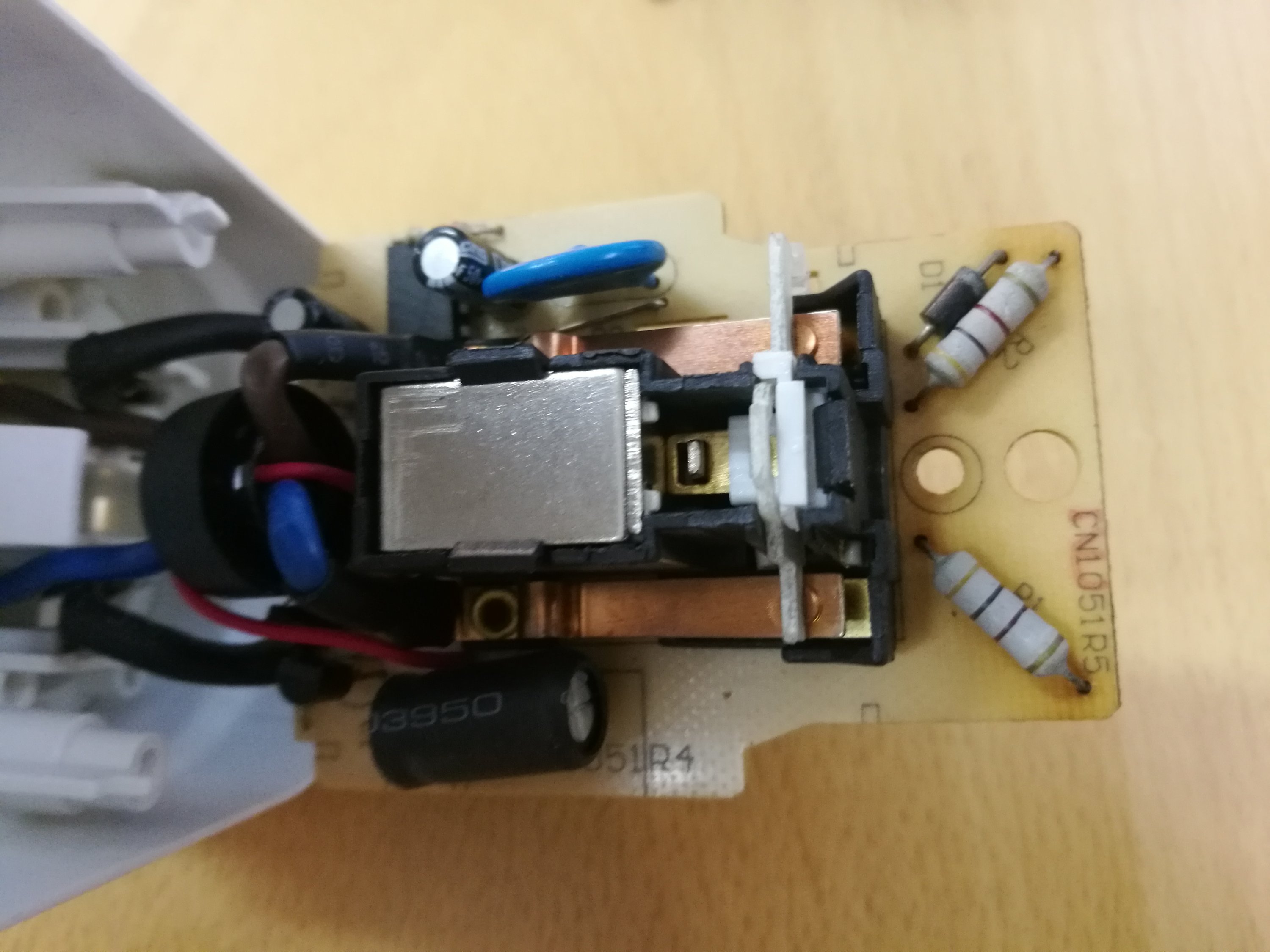
Here black thing with hole on the left the current transformer used to measure the current difference between incoming live and neutral wires. The third thin wire implements the “test” button simulated fault current. The electronics consists mainly of one 8 pin IC (with markings sanded off) and two components that look like transistors (could be transistors or thyristor). The big resistors and diode on the right seem to be as part of the transformer-less low voltage power supply used to generate the low operating voltage to the electronics.
Looking at the contacts closely reveal that there has been some serious sparking on the current carrying contacts. Maybe there has been a serious short circuit or big power turn-on surges (for example switch mode power supply with large startup surge connected to output).
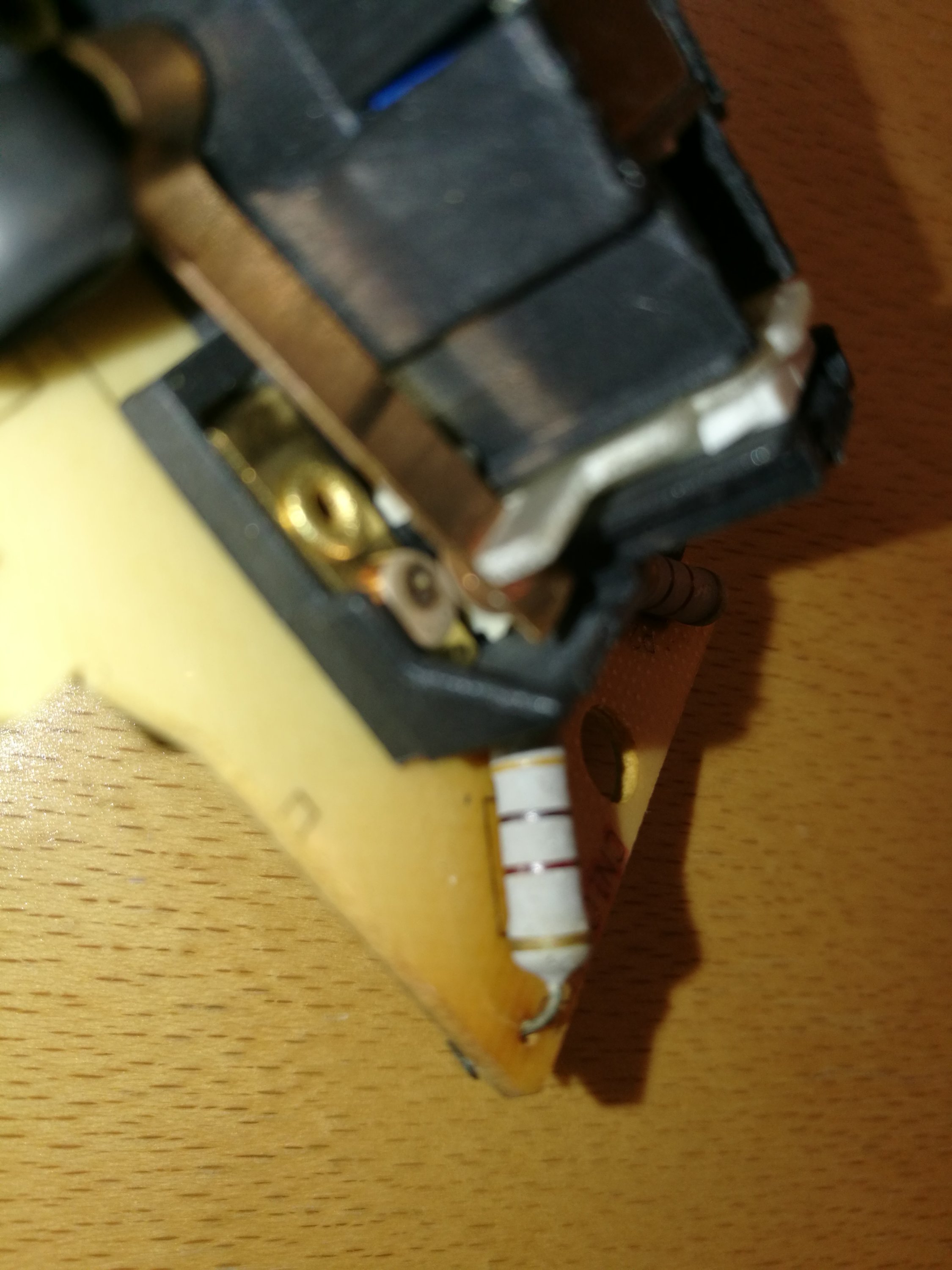
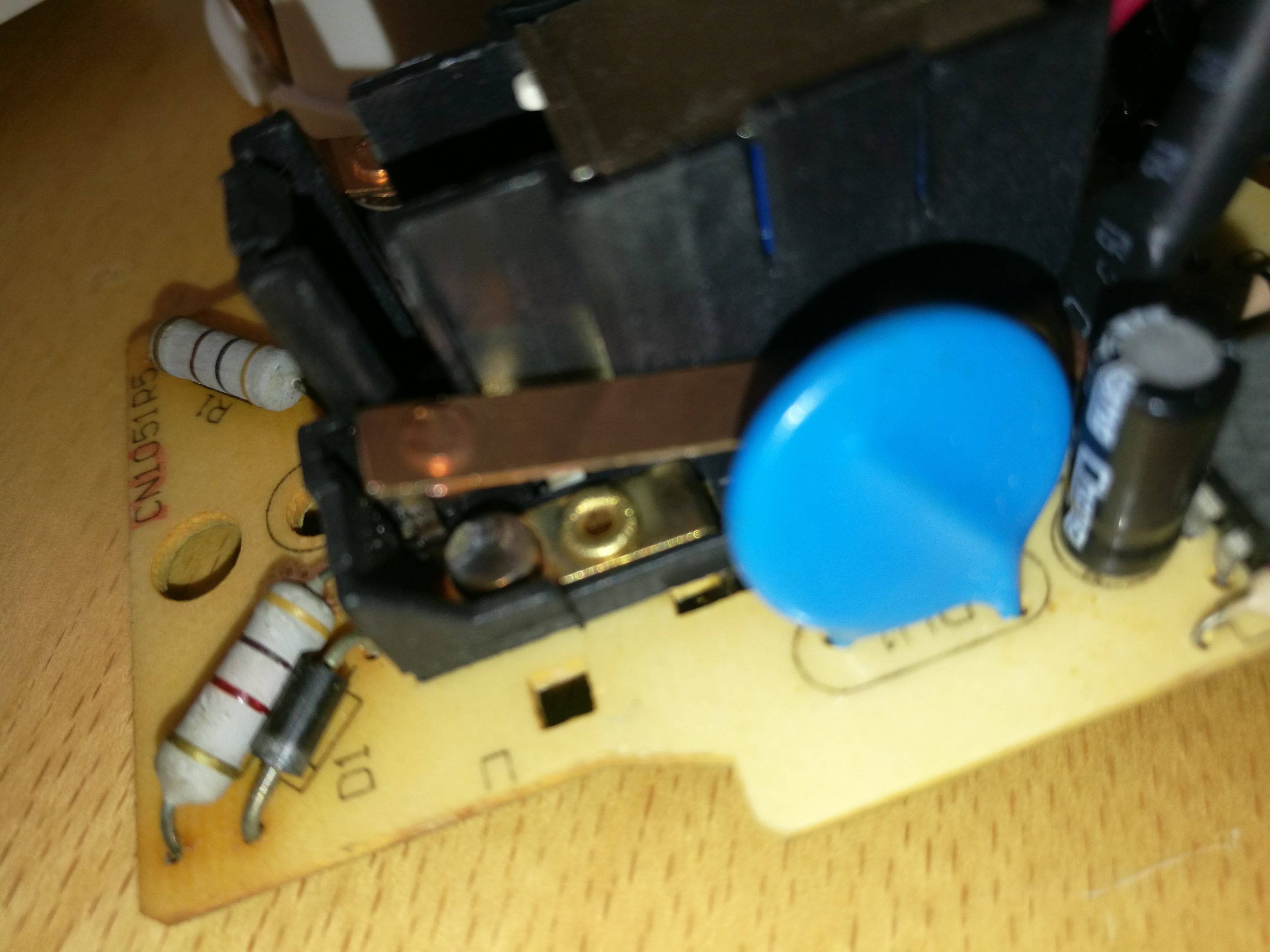
Some of the sparks have been so strong that they have made their mark to the case as well.
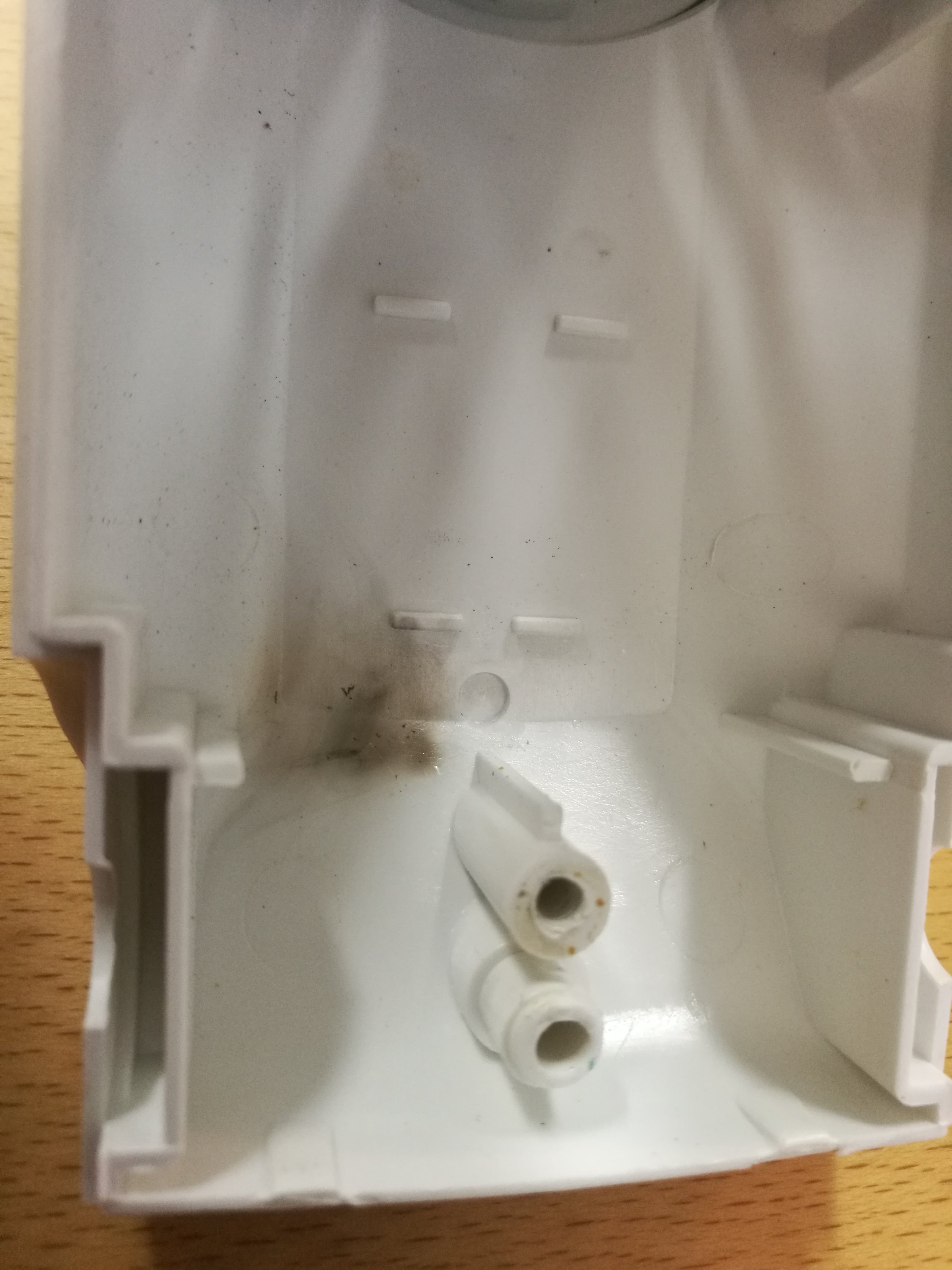
13 Comments
Tomi Engdahl says:
Another older tear-down
http://www.epanorama.net/newepa/2015/09/02/rcd-teardown/
Tomi Engdahl says:
https://en.wikipedia.org/wiki/Residual-current_device
Tomi Engdahl says:
How to Test RCDs
https://www.youtube.com/watch?v=ZaAUg75BR5Y
Demonstration of testing an RCD, different test settings, expected results and alternate test method for situations which have two or more RCDs on the same circuit.
Tomi Engdahl says:
How an RCD / GFI works and troubleshooting rogue tripping.
https://www.youtube.com/watch?v=XTUUijDclWk
Most modern homes are fitted with at least one RCD (Residual Current Device) or GFI (Ground Fault Interrupter). These are one of the greatest electrical safety inventions in history, but when they start tripping randomly it can be a real nuisance to try and hunt down the cause.
This is where a good sensitive AC current leakage detector can be very useful. In this case I’m using an AMECaL ST-9810 which is a nice simple clamp meter with peak hold that can measure current down to 100uA. It’s optimised for tracking down earth leakage current, but also functions as a regular clamp meter too, with a current measuring range up to 200A.
Tomi Engdahl says:
3 Lead RCD Test in the Consumers Unit on RCBOs Saving Time During Live Testings Process
https://www.youtube.com/watch?v=3TQvxQ_GF0c
Tomi Engdahl says:
The difference between a circuit breaker and an arc-fault/ground-fault circuit breake
https://www.youtube.com/watch?v=cL8d4P7xgYU
In this simple demo conducted at Eaton Corp.’s Power Systems Experience Center, Dan Carnovale explains what an arc fault is and why there is such a big deal made about detecting arc faults in circuits. Also explained are the components added to an ordinary circuit breaker that go into detecting both arc faults and ground faults.
Tomi Engdahl says:
Demonstration of a Ground Fault Circuit Interrupter (GFCI) – Don’t try this at home!!
https://www.youtube.com/watch?v=UT2EDYXYWIY
Demonstration of a Ground Fault Circuit interrupter (GFCI). Home Inspection Tips
Tomi Engdahl says:
How to set up a Megger 1741 MFT to test AC RCD’s, A Type RCD’s and B Type RCD’s With Lee Baker
https://www.youtube.com/watch?v=NJ1tDvrjhB0
In this video we show how to set up a Megger 1741 MFT tester so we can test AC RCD’s, A Type RCD’s and B Type RCD’s. We also discuss the application for AC, A type and B type RCD’s
Tomi Engdahl says:
TDK – Unique EMC filters minimise earth leakage currents
https://www.electropages.com/2019/04/tdk-unique-emc-filters-minimise-earth-leakage-currents/?utm_campaign=2019-04-02-Electropages&utm_source=newsletter&utm_medium=email&utm_term=article&utm_content=TDK+-+Unique+EMC+filters+minimise+earth+leakage+currents
. The device can be employed for earth leakage currents of up to 1A and can efficiently compensate leakage currents over a broad spectral range from 150Hz to approximately 30kHz.
The device couples a 180-degree phase-shifted current with the same amplitude to the leakage current to the respective phases and feeds it backwards to the source. This stops the leakage currents from flowing through the RCD and tripping it inadvertently, thus enhancing plant availability.
Tomi Engdahl says:
Failed 3-phase RCD/GFCI from a Rolec electric car charging pillar. (with schematic)
https://www.youtube.com/watch?v=4vGmcdisUr8
One of the most interesting things about this RCD/GFCI is that it is a type-A designed to detect pulsing DC from a mains voltage rectifier. Something that can defeat standard AC RCD’s/GFI’s in some fault scenarios.
It appears that Rolec have had quite a lot of these breakers fail in the same way, including the single phase ones, and usually on the same terminal.
Tomi Engdahl says:
http://www.mattikaki.fi/sahkoturvallisuus/vikavirtasuojakytkin.htm
Tomi Engdahl says:
Types Of RCD
https://www.youtube.com/watch?v=5WNAHhQEn9U
Types of Residual Current Devices, Type AC, A, F, B and B+. What each type is intended for and what fault currents they will work with.
Effective September 2022, BS7671 requires a minimum of Type A for the majority of installations.
However some devices are not suitable for use with Type A and require others such as Type F or B.
Tomi Engdahl says:
The Complete Guide To RCDs – Residual Current Devices
https://www.youtube.com/watch?v=bXS-uNxeTXo
Most circuits within a modern electrical installation are protected by an RCD or Residual Current Device. RCDs offer protection against electrical faults and electric shock. However, as electrical installations and connected appliances become more complicated, this places additional requirements on the designer to ensure the RCDs are matched and offer the correct levels of protection. In this free accredited CPD training module, we explore using RCDs as defined in BS7671 UK wiring regulations.
==============================================
00:00 Introduction to RCDs
01;20 What protection do RCDs provide?
03:40 How do RCDs work?
08:40 DC leakage currents & non-linear electrical loads
12:30 Different types of RCD
13:00 Type AC – RCD
14:10 Type A – RCD
15:30 Type F – RCD
17:10 Type B – RCD
18:40 Installing the correct type of RCD
==============================================